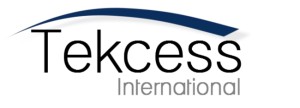Do you sometimes feel like you lost, even though you won? The plot usually goes something like this.
Your machine is the perfect solution for your customer. The process guys have confirmed that it meets their needs. The operators and maintenance technicians have given their approval. You’ve scored a “technical win.” You’re on your way to winning the order. You’ve logged it into this quarter’s sales forecast at a price that reflects the value your equipment provides.
Then the arm wrestling with purchasing starts. Purchasing says, “The team likes your equipment, but your price is too high. If you can bring your price in line with other suppliers, we’d be happy to award the purchase order to you.”
The next two weeks of back and forth result in the order, but the final price is nowhere near the value-based price you entered into the sales forecast. It feels like you lost, even though you won.
Every negotiation is a contest where both parties seek to capture as much value as they can for themselves. Nothing will change that fundamental fact. However, there’s a counterintuitive move that can tilt things a little more in your favor and help you get value-based prices.
Share your price with your customer’s entire buying team. It creates more internal defenders of your equipment’s value. The more people defending your value, the higher the probability that you’ll get value-based prices.
The Capital Equipment Buying Team Defined
A team usually makes capital equipment buying decisions Think of this team as having these three personas:
- The economic buyer,
- The technical buyer, and
- The user buyer
The economic buyer makes the final decision to buy. This buyer may be a person or a group of people. Purchasing is often part of this group. The technical buyer determines if your equipment can perform the required task. These are the guys who set the technical buying specifications. The user buyer will operate and maintain the equipment once it’s purchased.
Share Your price with The Entire Buying Team
A common approach for selling to a buying team like this is to limit the sales conversation with each of the buyer types to matters directly related to their role on the buying team. So price and return-on-investment conversations happen with the economic buyers. The specification discussion is reserved for the technical buyers. Usability and serviceability capabilities are promoted to the user buyer.
Your instinct may be to limit price discussions to the economic buyers because no one else cares or needs to know. The technical and user buyers may even reinforce your instincts, telling you that they care only about specifications and operating costs. However, consider that each buyer’s persona will influence not just the buying decision, but also the price that’s eventually paid.
When purchasing runs back to the buying team to review your latest proposal, whom would you prefer to understand the relationship between your equipment’s price and performance: everybody or just the economic buyer? Of course, you would prefer that everybody does. It creates more internal defenders of your equipment’s value. The more people defending your value, the higher the probability that you’ll get value-based prices. Every key participant in the buying decision process should be exposed to your value proposition, including how it relates to your equipment’s price.
Now, you’re not going to share proposal details with everyone or pester the technical stakeholders with each negotiated iteration. However, you can help the non-economic buyers connect value-driver performance to your price expectations. For example, let’s say after a successful demonstration the technical buyer says something like,
“Those are the highest yields I’ve ever seen on a machine like this!”
There’s nothing wrong with saying,
“Thank you. Our machine’s price might be a little higher than the other one you’re considering, but our yield advantage alone pays for the difference in less than a week.”
Now later on in the process when purchasing comes to the buying team with your latest proposal, you’ve got a technical buyer equipped to help substantiate your value.

